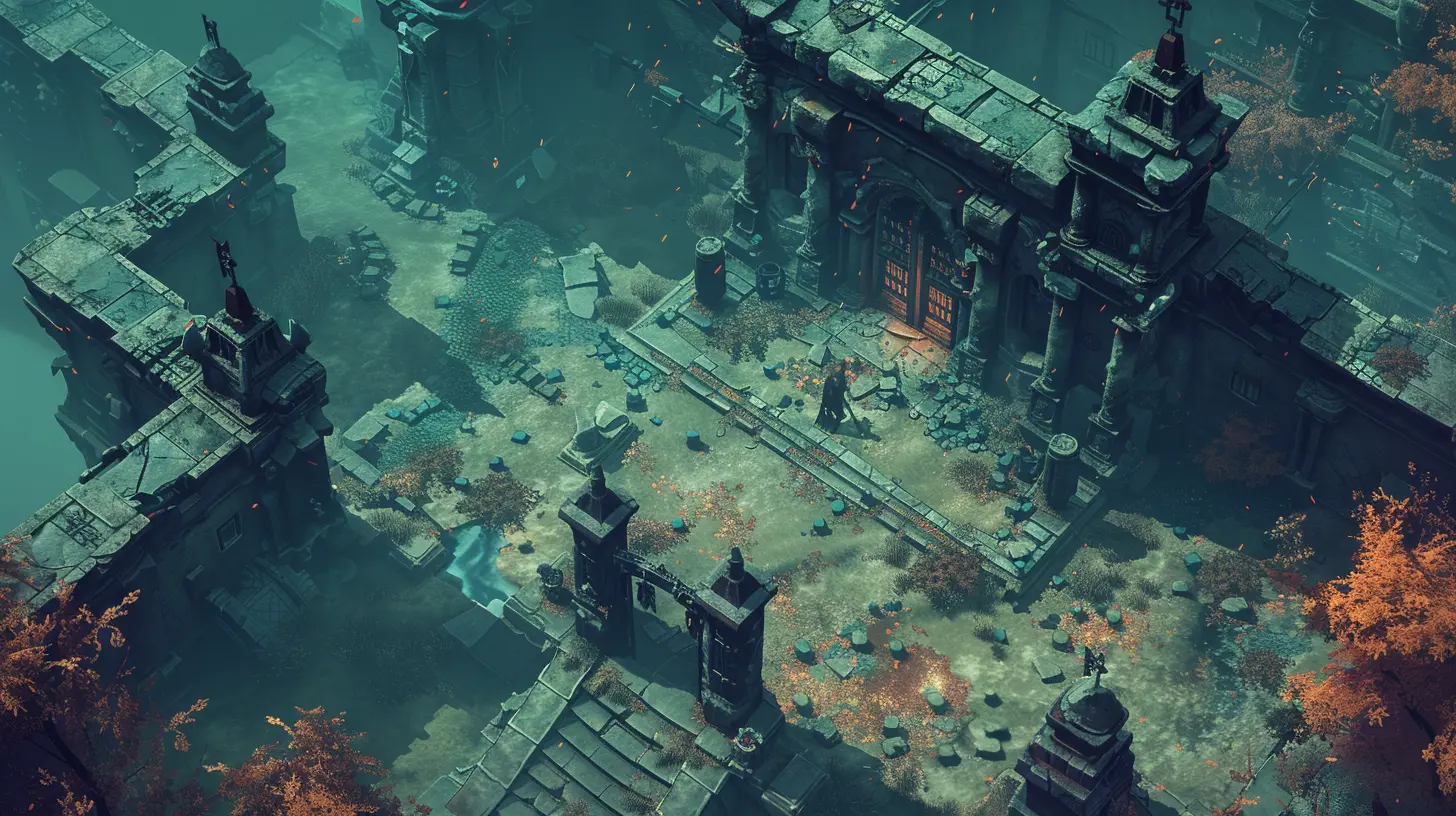Creating Games for Mobile: Design Constraints and Opportunities
16 May 2025
So, you've decided to create a mobile game. First of all, congratulations! You're diving into one of the most exciting and fast-paced corners of the gaming industry. But let's be real—designing games for mobile isn’t a walk in the park, is it? Between the tiny screens, battery limitations, and short attention spans of users, it can feel like you’re trying to build a spaceship out of toothpicks. But, my friend, every challenge comes with a unique opportunity. Mobile game development is like solving a Rubik’s Cube: tricky, colorful, and oh-so-rewarding when everything clicks into place.
In this article, we're going to dive headfirst into the design constraints and opportunities that come with creating mobile games. Whether you’re a seasoned developer or just someone who thinks, “Yeah, I could totally make the next Candy Crush,” there’s plenty to unpack here. Let’s get started, shall we?
The Limitations that Keep You on Your Toes
Let’s not sugarcoat it—when you’re designing for mobile, there are some hurdles you’ll need to jump. But don’t sweat it. We're here to break them down so they feel less like terrifying monsters and more like puzzles waiting to be solved.1. Screen Size: Tiny Canvas, Big Challenge
Mobile screens are small. Like, really small. If you’re used to designing for PCs or consoles, it can feel like you’re trying to cram an elephant into a shoebox. You don’t have the luxury of sprawling landscapes or uber-detailed UIs.But here's the bright side: constraints breed creativity. Smaller screens force you to simplify your design and prioritize the most essential elements. Think minimalist UI, larger buttons, and easy-to-read text. By focusing on what matters most, you might actually end up with a cleaner, more user-friendly design. Less is more, baby.
2. Hardware Limitations: Full Throttle? Not So Fast
Mobile devices aren’t exactly powerhouses compared to gaming consoles or PCs. Sure, they’re getting beefier every year, but they’re still limited by battery life, processing power, and storage.Does this mean you should put your dreams of an open-world RPG on hold? Not at all! It just means you need to optimize like a ninja. Lower asset sizes, streamline code, and use clever tricks like LOD (Level of Detail). Bonus points if you make your game run smoothly on older devices—because not everyone upgrades their phone every year, you know?
3. Touchscreen Controls: Simplicity is Key
Ah, the touchscreen. It’s both a blessing and a curse. On one hand, it allows for incredibly intuitive controls. On the other hand, try playing a fast-paced action game with virtual joysticks, and you’ll see why some developers toss their coffee mugs in frustration.The key here? Keep it simple. Tap-based mechanics, swipe gestures, and drag-and-drop actions tend to work better than overcomplicated setups. Basically, if a toddler can figure out your controls, you’re on the right track.
The Opportunities You Didn’t See Coming
Alright, enough about the challenges. Let’s talk about the good stuff—the juicy opportunities that make mobile game development one of the most exciting creative fields out there.1. Reach a Massive Audience
Here’s the thing: everyone has a phone. And when I say everyone, I mean your grandma, your cousin, and probably even your dog (well, okay, maybe not the dog). By creating a mobile game, you’re tapping into a global audience of billions. That’s not an exaggeration. BILLIONS.This massive reach means you can create games for all kinds of people, from young kids to hardcore gamers to your neighbor who only plays Wordle. Casual games, in particular, thrive on mobile because they’re easy to pick up and play for a few minutes at a time.
2. Leverage Unique Features of Mobile Devices
Mobile phones are packed with cool features that you can use to elevate your game. Gyroscopes, accelerometers, touchscreens, cameras, GPS—you name it. Want players to tilt their phone to steer a car? Done. How about using GPS to create location-based gameplay like Pokémon GO? Easy.These features let you create experiences that are immersive and, let’s be honest, kind of magical. Make your game stand out by thinking outside the box—your players will thank you.
3. Monetization Galore
When it comes to making money, mobile games are like the Swiss Army knives of monetization. You’ve got options: in-app purchases, ads, subscription models, premium downloads—you can even sell adorable hats for in-game characters. (Looking at you, Among Us.)The trick is to balance monetization with user experience. Nobody likes a game that hits them with 38 ads before they’ve even finished the tutorial. Be strategic, respect your players, and remember that happy users are more likely to spend money.
Balancing Constraints and Creativity
So how do you navigate these tricky waters? It’s all about finding balance. Think of mobile game development as a tightrope walk between constraints and creativity. Too much focus on the technical limitations, and you risk making a game that’s bland. Too much focus on flashy ideas, and you’ll end up with a game that crashes every five seconds.Here are a few tips to help you stay balanced:
1. Prototype Like There’s No Tomorrow
Before you dive headfirst into development, build a prototype. Seriously, it’ll save you so much time and heartache. A quick prototype allows you to test your core gameplay mechanics and iron out any kinks before things get overly complicated.2. Know Your Audience
Not all mobile gamers are the same. Are you targeting casual players who want a quick distraction while waiting in line at the coffee shop? Or are you aiming for hardcore gamers who are willing to invest hours into your game? Understanding your audience will help you make design decisions that resonate with your players.3. Test, Test, and Test Again
Mobile game development isn’t a one-and-done deal. You need to test your game on as many devices as possible, from the latest iPhone to that ancient Android tablet your uncle still uses. Different devices have different quirks, and your job is to make sure your game runs smoothly on (almost) all of them.
Case Studies: Mobile Games That Got It Right
Need some inspiration? Let’s take a quick look at a couple of mobile games that absolutely nailed the balance between constraints and creativity.1. Monument Valley: This visually stunning puzzle game embraced minimalist design perfectly suited for small screens. Its intuitive tap-and-swipe controls made it a joy to play, and its clever use of optical illusions captivated players worldwide.
2. Clash Royale: Supercell’s hit game is a masterclass in optimization. It runs smoothly on a wide range of devices, offers bite-sized gameplay perfect for mobile, and uses clever monetization strategies without alienating its player base.
3. Pokémon GO: Niantic revolutionized mobile gaming by using GPS and AR features to create a game that literally got people off their couches. Talk about turning constraints into opportunities.
The Future of Mobile Game Development
Mobile gaming is constantly evolving. With the rise of 5G networks, cloud gaming, and VR/AR technology, the possibilities are endless. But even as the tech gets fancier, the core principles remain the same: create experiences that are engaging, accessible, and optimized for the platform.At the end of the day, it’s not about how many polygons you can cram onto a screen or how complex your mechanics are. It’s about making players smile, think, and maybe even lose track of time. And isn’t that what gaming is all about?
Wrapping It Up
Creating games for mobile is like cooking with limited ingredients. Sure, you might not have a fully stocked pantry, but with the right blend of creativity and problem-solving, you can whip up something spectacular. Embrace the constraints, leverage the opportunities, and remember to have fun along the way. Who knows? Your game might just become the next mobile sensation.all images in this post were generated using AI tools
Category:
Game DevelopmentAuthor:

Greyson McVeigh
Discussion
rate this article
4 comments
Valerie Meyers
Mobile game design: where your creativity meets tiny screens and thumbs! Embrace the quirks and constraints—it’s like crafting a masterpiece on a post-it note. Let the fun fit in your pocket!
June 10, 2025 at 3:38 PM

Greyson McVeigh
Absolutely! Embracing mobile's unique constraints sparks creativity and innovation, allowing us to craft engaging experiences that fit right in players' pockets.
Arianth Martinez
Great read! Embracing mobile design constraints can spark creativity. Each challenge is just an opportunity waiting to be turned into a fun gaming experience! 🎮✨
May 26, 2025 at 3:19 AM

Greyson McVeigh
Thank you! I'm glad you enjoyed it and agree—constraints can indeed lead to innovative and exciting gameplay! 🎮✨
Rune Lewis
Great read! It’s fascinating to see how design constraints can lead to innovative solutions in mobile game development. Your insights on balancing creativity with technical limitations resonate deeply. I appreciate the valuable perspectives shared here. Looking forward to exploring more about this topic!
May 23, 2025 at 4:33 AM

Greyson McVeigh
Thank you for your kind words! I'm glad you found the insights valuable. Excited to share more on this topic!
Annabelle Stone
Great insights! Embracing design constraints can truly spark creativity. Mobile games have immense potential to innovate and connect with players. Keep it up!
May 18, 2025 at 3:26 AM

Greyson McVeigh
Thank you for your kind words! I'm glad you found the insights valuable. Excited to see where mobile innovation takes us!



